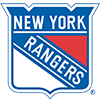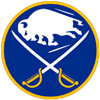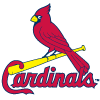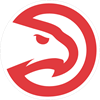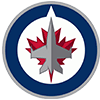I'm writing this from a Starbucks. How cliche?
I always swore that I would never write in a Starbucks. I would never be one of those people sitting in a deceptively uncomfortable seat at a slightly-too-low counter, aggressively typing away at each key on my laptop. But that's what I'm doing. It's the stereotype of every non-writer-that-thinks-he's-a-writer out there.
Maybe if people see me writing, it'll legitimize my entire career.
Well, people can see me and I feel less legitimate than one of Shawn Kemp's children.
This wasn't my decision. I was forced out. Usually, I'll write from the comfort of my own home. I'll sit on the couch or at the kitchen table and knock out a column in one sitting. But there is an inherent flaw in that: My system concedes all too much power to the New York City dictatorship that is Time Warner Cable.
As of early March, Massachusetts residents can now participate in online sports betting, allowing them to place bets on their mobile devices. One advantage of creating a new account is the availability of welcome bonuses, which can help kickstart your online betting experience.
If you're a new player, you can immediately benefit from various promotions for Massachusetts sports betting offered by six different sportsbooks. These offers can result in thousands of dollars in welcome bonuses.
BetMGM Massachusetts is offering a generous welcome bonus to new players who redeem the BetMGM Massachusetts bonus code. This bonus previously offered $200 in bonus bets before the launch of online sports betting in Massachusetts, but since its launch, it provides a first bet offer worth up to $1,000.
Bettors in Massachusetts can also take advantage of the Caesars Sportsbook Massachusetts promo code and receive a first bet on Caesars worth up to $1,500. This is currently the best offer available for sports bettors in the Bay State, as Caesars Massachusetts looks to make a splash in New England.
Time Warner Cable, the same company that has knocked out the Internet in my apartment for four of the past five weeks. Time Warner Cable, the same company that has sent four repairmen to come fix my connection, only to have them further thump my wireless into a coma.I tried my best not to go to Starbucks. I even traveled 50 blocks to head to the New York Public Library, only to find out that I had arrived a mere 30 minutes before the library's closing. So I walked around in the New York City, 90-degree heat (which feels more like 120 degrees) for about five minutes, starting to have a bit of a nervous breakdown.
And then I saw it - my worst enemy, which had become my biggest desire - a Starbucks resting on the corner of 41st and Madison, almost as if it were some sort of desert mirage. I had no choice. My quest never to write in a Starbucks was destined to end today.
The Cavaliers aren't in all too different a situation. Sure, I bet Quicken Loans Arena has a decent wireless connection (Comcast is pretty darn good), but having the No. 1 overall pick in this draft isn't all that different from being stuck without Internet in a Starbucks-run world.
There aren't any future All-Stars out there this year. At least that's what popular opinion will tell you. And with that in mind, most people have Cleveland lined up to grab Maryland center Alex Len with the first pick. But there are guys with potential and, in a draft that is as weak at the top as this one is, a team with the No. 1 overall pick has to go with the potential. When you're out of options, sometimes the mirage is the best place to go. Sometimes, you have to go to Starbucks.
1. Cleveland Cavaliers select C Nerlens Noel, (Kentucky).
Noel has more potential than anyone else in this draft and that's mainly because there are few assets more essential to a winning team than a dominant rim protector.
This is where you stop me and say, "The Heat just won back-to-back championships with Joel Anthony and Chris Bosh at center. Go home. You're drunk."
But Miami is the exception, not the rule. The Heat have LeBron James, who can negate whatever "true way" there is to build a team. Even with this small ball fad that is taking over the league (notice that it's a fad and not a gimmick), rim protectors are remaining prominent. The Knicks are able to play small ball because Tyson Chandler insures that they can defend in the paint. The Thunder can play best without Kendrick Perkins because they can get out running while still allowing Ibaka to man the hoop. The Warriors were successful with Harrison Barnes shifting over to the four in the playoffs, but they probably wouldn't have been successful were it David Lee playing center instead of the defensive-minded Andrew Bogut.
In a league that is obsessing over efficiency, corner threes, and shots at the rim, deterring those attempts is as important as anything else. And that's where Noel comes in.
If Cleveland wants to move forward to become a true contender with Kyrie Irving, it needs an athletic rim protector. Sure, Noel is a project, but is that such a big deal? In fact, wouldn't the Cavaliers be better off in some ways drafting a project over a finely tuned player?
The Cavs probably won't contend next year. Even if they do, contending will have to be amended to mean, "fighting for the eight seed in the Eastern Conference". That's not a position a young team wants to be in. So if a 35-win season is in Cleveland's immediate future, why not go the opposite way of the playoffs?
The 2014 NBA Draft is the polar opposite of this year's when it comes to talent. It's more loaded than J.R. Smith on a Saturday night. A team doesn't even need the first overall pick (which will almost definitely be Andrew Wiggins) to feel like it won out. Anywhere in the top five would probably guarantee an elite talent.
So in some sick and twisted way, Noel's torn ACL actually can work as an advantage for Cleveland. Draft Noel, let him sit for as long as he needs (if that's the whole season, so be it) and then get ready to make the leap in 2014 with Irving, Dion Waiters, Tristan Thompson, Noel, another top-tier lottery pick, and (fingers crossed) LeBron James, who everyone seems to think will consider returning to his home state as a free agent next offseason. That's not an eight-seed caliber team. It's a championship-caliber one. And even if LeBron isn't there, that's a team that can contend in the East. As long as the Cavs realize they're still probably a year away, they're in good shape.
2. Orlando Magic select SG Ben McLemore, (Kansas).
McLemore is typical of this year's draft. He should be dominant. He should be an elite talent. He should control games on a night-in, night-out basis. But he doesn't.
This is a spot where Orlando has to take the best talent. In this case, that's McLemore. He's athletic, he can shoot, and if he learns the right way, he could become a good defensive player at the NBA level. With trade talk surrounding Arron Afflalo, the Magic could be in need for a new shooting guard in the near future, and McLemore could be their guy.
With all the good that McLemore brings, there is plenty of bad. He tends to shrink in crunch time, and there are often long stretches of games when he shies away from the ball. Fans don't have to look much further than Kansas's second game against Iowa State, an overtime thriller in which McLemore pulled a complete Houdini act down the stretch, to see that. In fact, the only time the announcers said the Kansas star's name in the final 15 to 20 minutes of the game was to note that they hadn't said his name in the in the past 15 to 20 minutes.
It's so odd to see someone with his talent miss a couple of shots and then decide, "That's it. I'm done." He's a scorer, but he attempted single digit shots in nine of his final 23 games of the year, all either conference or postseason contests. Those are big moments. And it's not just about efficiency. It's about discouragement. He shot only 37.1 percent from the field in those nine games and scored no more than 13 points in any of them. If he develops a scorer's mentality, then we're talking about a different player, but so far, we haven't seen any evidence that a change is coming.
3. Washington Wizards select SF Otto Porter, (Georgetown).
Porter is the Swiss Army Knife of the draft. What better way is there to describe a 6-foot-9 point forward with a 7-foot-2 wingspan that also plays hard on the defensive end?
He isn't an exceptional athlete, but he figures out other ways to create offense with his shooting or his well above-average passing. The Wizards could use another ball handler, and Porter would space the floor nicely with an elite shooter in Bradley Beal and a still-improving shooter in John Wall. Though Porter played plenty of power forward at Georgetown, he projects as more of a three than a four in the NBA. But can he adjust to a new kind of offense in the NBA?
The former Hoya handled the ball so often in college, but wouldn't be the primary ball handler when playing with John Wall. On top of that, coach John Thompson III rarely put him in a position to create in the pick-and-roll or in isolation. Those are the main sources of offense in the NBA. Can he become as dominant off the ball as he was when he had the rock in his hands? His intelligence, work ethic, and history of past improvement say yes. His dominance as a midrange shooter says yes. So yes, he should fit in nicely in the nation's capital.
4. Charlotte Bobcats select SG Victor Oladipo, (Indiana).
And now to the man who should be everyone's favorite player in the draft. Maybe he's not the best. Maybe he won't have the most astonishing career. But he should be everyone's favorite, and after the world sees him play at a national level, he probably will be. There's no one who plays with more energy than Oladipo and there's no team (or fan base) that needs an infusion of energy more than Charlotte's.
Kemba Walker is the only Bobcat that should even be imagined as part of the future and that means the Bobcats have the luxury of being able to pick the top talent regardless of position. That means Oladipo, a ferocious defensive player that can turn into a pretty good offensive player, is pretty much a no-brainer.
Dominant collegiate defenders tend either to excel on or off the ball. It's hard to find someone like Oladipo, who can enter the league right away as an elite on-ball and off-ball defender. With the former Indiana standout on the floor, offensive players squirm around the court as if someone threw them in the Oladip-end. They don't stand much of a chance. With a 6-foot-9 wingspan, he can guard three positions and probably has a floor of Tony Allen. That's a pretty safe pick.
5. Phoenix Suns select PF Anthony Bennett, (UNLV).
You know how this draft doesn't have any All-Stars? Bennett might be one to disprove that. The UNLV freshman already has a versatile scoring arsenal, especially for someone so young. He can bang down low and has even shown an ability to step outside the paint, shooting 37.5 percent from three on 2.7 attempts per game. He's remarkably athletic and is a tremendous finisher at the rim.
An athletic power forward who can create his own offense, shoot, and finish sounds like the dream, but there is a catch: Bennett is only 6-foot-7. That's a red flag even with his slithery 7-foot-1 wingspan. Add that he's coming off relatively significant surgery on his left (non-shooting) shoulder and that explains how he can fall to No. 5 overall.
6. New Orleans Hornets - err, Pelicans - select C Alex Len, (Maryland).
As covered earlier, Len could be the No. 1 pick come Thursday night. He has traits that say first overall pick: the size, the quickness, and the ability to score at the rim all show that the former Maryland center could turn into quite the player at the next level. He is a strong screen setter and his 7-foot-1, 255-pound body is even more effective when powerfully moving towards the hoop. Put him in a pick-and-roll offense and he can get his points, especially considering that he scored well on pick-and-rolls this season even with the Terps' subpar offensive spacing.
Where Len struggles is in the post and that's why this draft doesn't have him going first overall. He still has plenty of work to do with his back to the basket, having not solidified a set of go-to moves while on the block. And that's why he averaged only 11.9 points per game last season.
It's worth being nervous over that number. 11.9. It's one thing to draft a defensive specialist like Noel and not worry about the offense, but while Len is a good defensive player, he's not near supremacy just yet. A standout player on an average team should have scored more, but he didn't. He should have consistently had games where he dropped 20-plus points, but his season high was 23 and that was in the season opener, the only time he topped 20 points in a game all season. He might be lacking the It's Time to Dominate Gene, which is what knocks him down to No. 6 in this draft.
7. Sacramento Kings select SG C.J. McCollum, (Lehigh).
College basketball fans hear the name "C.J. McCollum" and their minds immediately jump to March 16, 2012, when McColum dropped 30 in an upset over the two-seed Duke Blue Devils in the first round of the NCAA Tournament. Here's what's scary, though: McCollum has improved since then.
The senior's season ended after only 12 games last year, which is such a shame, mainly because we never got to see what his numbers would have been like over the course of a full season. In those 12 games, he shot 49.5 percent from the field and 51.6 percent from three, while using a ridiculous 37.2 percent of his possessions. That efficiency with that usage is how a Patriot League player coming off an injury can work his way into the top ten.
He's a good student with a pristine reputation. How can you not root for a kid that hits threes and then runs to the school newspaper after the game? He's eclectic. It's refreshing. Lord knows the Kings could use some good karma.
8. Detroit Pistons select PG Trey Burke, (Michigan).
Are there campaigns trying to get the Pistons to draft Burke? Are there any "Keep Trey in State!" rallies going on in Ann Arbor right now? I'm waiting for the picketers to become more prominent.
Detroit is actually a perfect fit for Burke even if you get past the geography of the pick. The Pistons' future is set down low with the combination of Andre Drummond and Greg Monroe quickly sprinting its way to "elite" status. Who those two need is someone to get them the ball. Jose Calderon is a free agent, and Brandon Knight seems more effective as a shooting guard than as a point guard. That leaves a spot open for Burke, who is a small guard with excellent court vision and unlimited range.
There aren't many worries if Burke can handle running an NBA offense. He's great in the pick-and-roll, and he knows that no defender can go under the screen when he has the ball. It's Damian Lillard-like the way he controls a game. As long as he can finish at the rim - which isn't a given considering his slender physique - he can add to the plethora of good point guards that are already in the league.
9. Minnesota Timberwolves select SG Kentavious Caldwell-Pope, (Georgia).
Caldwell-Pope has climbed his way up the draft boards throughout the workout process, but he plays a relatively inefficient game. He's a nice isolation scorer, but that's how he creates a heavy diet of his points. He does, however, fit in quite nicely with the Timberwolves, who finished dead last in the NBA in three-point shooting this past season.
Caldwell-Pope shot 37.3 percent from long range on 7.0 attempts per game as a sophomore at Georgia, but many of his jump shots in the NBA will presumably have to come in catch-and-shoots situations. After handling the ball for much of his time in Athens and posting a 29.2 percent usage rate in the process, he will have to adjust his game. Will a high-usage, iso scorer be able replicate his collegiate success against NBA defenders?
10. Portland Trail Blazers select C Cody Zeller, (Indiana).
There are so many reasons to go back and forth on Zeller. He was an impact freshman and potentially could have been a top-five pick had he entered the draft last season. But when he returned to school, everyone dissected his game to such a degree that his stock dropped. Zeller isn't worse than he was a year ago. He's just more exposed. And that all came to fruition in the Sweet 16 against Syracuse, when five of his seven missed shots were blocked at the rim against the likes of Baye Keita and Rakeem Christmas.
After Zeller's underwhelming performance, there could've been an argument made to boot him out of the lottery. But then came the NBA Combine and the Cody Zeller Opinion Swing took hold once again. He tested out as clearly the most athletic center; pair a 37.5-inch max vertical and a 35.5-inch standing vertical with the best times in the lane agility drill and the three-quarter-court sprint of any center at the Combine. And with that, Zeller made a comeback.
We don't really know if Zeller can shoot. That's something we saw little of in college. Tom Crean's scheme had him hanging around the basket most of the time with very little drifting towards midrange. If he can knock those shots down though, he's all of a sudden a power forward, a position that would fit someone with an 8-foot-10 standing reach much better than center.
11. Philadelphia 76ers select C Steven Adams, (Pittsburgh).
Should we go by what we've seen or what we think we'll see? That's the real query with Adams, a 7-foot, 255-pound center from New Zealand.
What we've seen says Adams could be a nice NBA player, someone who could be an athletic big to protect the rim and defend pick-and-rolls with a 7-foot-4 wingspan. Athletic with Adams doesn't just mean, "That guy can jump really high". It's also about quickness, and the former Pittsburgh center is one of the quicker players of his size you're going to see.
What we think we'll see is a more rapid pace of development than what one might expect from your usual college freshman. Sure, a 19-year-old center is probably in the zygotic stages of his NBA development, but Adams may have even more room to improve than usual. Until last season, he almost never saw appropriate competition. In fact, at home in New Zealand, he often found himself facing up against girls. You can take that fact in two directions:
1. He's going to be shocked by the level of play in the NBA and won't be able to adjust.
2. He's nowhere near his ceiling, and when he reaches it, he could become much better than anyone expected.
That's a tough call for any NBA general manager to make.
12. Oklahoma City Thunder (from Raptors) select C Gorgui Dieng, (Louisville).
Dieng is already 23 years old, but Oklahoma City isn't looking for another star. All the Thunder needs is another role player to help contribute, and that's exactly what Dieng can bring.
He is a refined defensive player and has strong fundamentals as a shot blocker. Even though he's probably too skinny and may struggle defending heavier bigs in the post, he is an above average rebounder and gets to spots quickly when the ball is in the air, exemplified by his 17.5 percent rebounding rate. He can play both the four and the five and can help fill in for Serge Ibaka basically by replication, acting as a shot blocking big on the defensive end with a relatively consistent midrange shot when the Thunder have the ball. There's no way he gives the production of Ibaka, but he could be a nice filler off the bench for Oklahoma City because he won't necessarily change the defensive or offensive scheme when he enters the game.
13. Dallas Mavericks select PG Michael Carter-Williams, (Syracuse).
Ever seen pre-injury Shaun Livingston play? That's basically what Carter-Williams has to live up to. He is a lanky, 6-foot-6 point guard that sees over defenses and makes tremendous pass after tremendous pass. If he figures out how to make the right decisions with the ball, he has the ability to evolve into what Livingston was on a track to become, but after a year of seeing him start at Syracuse, Carter-Williams has given scouts reasons to question that decision making.
The former Orange point guard can't shoot but there are moments when he won't stop chucking the ball at the iron. Though he just finished his sophomore season, he's already 21 years old, and if he is going to learn how to put the ball in the hole from beyond the paint, he would most likely have started showing strides of that already. But he hasn't. And that's a problem.
We've learned from the Celtics with Rajon Rondo that even if a point guard is an upper-echelon distributor, an offense can't max out if the player who is running it can't score from the outside. If Carter-Williams still can't make his shots a few years down the line and continues to take contested jumpers - like he did at Syracuse - he could find himself as a subpar player quickly. But if he uses his top-notch athleticism, turns into a supremely pass-first player, and puts the rest of his energy into defense, he'd become a steal at No. 13.
14. Utah Jazz select SF Shabazz Muhammad, (UCLA).
Finally! Shabazz! It's been so long. I was beginning to think you should've just stayed home.
Shabazz is either overly criticized, undercriticized, or properly criticized depending on who you're talking to. He came into the year as the No. 1 recruit in the nation according to some services but disappointed in his only season at UCLA. The raw numbers were good (17.9 points per game, 5.2 rebounds per game) and he wasn't even particularly inefficient (52.8 percent true shooting percentage), but there was something that just wasn't there and, because of that, Ben Howland showed little confidence in featuring Muhammad in his offense.
Muhammad isn't particularly athletic for a shooting guard, and at 6-foot-6, he's undersized for a small forward. He's a tweener in every sense. But even for those who say that tweeners are a thing of the past with the NBA moving towards categorizing players by role instead of position (a camp I am mostly part of), there are knocks on Muhammad's game. He almost never created off the dribble, and as a substitute, UCLA used him as a catch-and-shoot wing. As a top-10 pick in most drafts, you don't necessarily want to pick a someone whose ceiling might be role-player-that-can-knock-down-shots-that-others-create-for-him, but Shabazz has good value in the middle of the first round, even with a team that already has some wings on its roster.
15. Milwaukee Bucks select SG Jamaal Franklin, (San Diego State).
Franklin is one of the most exciting players that will hear his name called Thursday night. He has a little bit of Josh Smith Disease and takes too many jumpers as a symptom of it, but there are so many other parts of the game in which he excels.
Franklin is a 6-foot-5 shooting guard that boasts a 6-foot-11 wingspan. He can guard multiple positions and is a quick, heady defender. He's super athletic and has a sort of unteachable toughness that plenty of young players just don't possess. So many have compared him to Kawhi Leonard, another San Diego State product that didn't shoot particularly well in college, but that comparison may not be particularly accurate. Leonard was an accurate shooter in high school that went awry in college. The Spurs fixed a glitch; they didn't reprogram the entire computer. Franklin, who has the smallest hands in this year's draft, the total antithesis of Leonard, needs a reprogramming.
There is an ultimate possibility that Franklin cuts out the jumpers when he gets to the NBA. He took silly shots at San Diego State, but he isn't a brainless player. In fact, it's quite the opposite. He's a sharp competitor in almost every way. He inherently understands the game. It's possible that Franklin just took those shots in college because it was schematic, part of a greater plan that coach Steve Fisher wanted to execute. In reality, Franklin is a slasher that gets to the rim and finishes there efficiently. He's an athlete, and if he starts making better decisions on the offensive end, he's a steal in the middle of the first round.
Part 2 can be read here.









